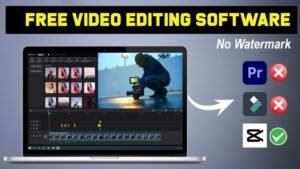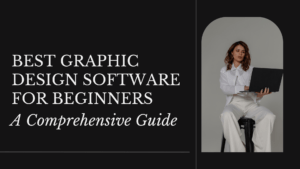
No Watermark Video Editing Secrets Big Creators Hide
By Admin
You’ve just finished editing your video, added the perfect transitions, and… there it is—a glaring watermark ruining your hard work. Sound familiar? Most creators waste hours ...
Graphic design software refers to digital tools used to create visual content. These programs enable designers to craft and edit images, illustrations, layouts, and typography for both print and digital media.

By Admin
You’ve just finished editing your video, added the perfect transitions, and… there it is—a glaring watermark ruining your hard work. Sound familiar? Most creators waste hours ...

By Admin
Let’s face it: choosing graphic design software feels like navigating a maze blindfolded. With endless options like Canva for quick social posts or Adobe Illustrator for pro-level vector art, 81% ...

By Admin
As a professional copywriting journalist, I know how vital it is to protect your website’s images. Copyright infringement and unauthorized use can harm your search ...

By Admin
Take your gaming to the next level with legal craft server codes! Discover hidden features and customize your gameplay. This guide is perfect for both ...

By Admin
Exploring arts and crafts can be exciting, but knowing the rules is key. At the center is the Nonprofit Tagging Encoding Effort (NTEE), a system ...

By Admin
Cape Cod, a breathtaking destination with its scenic beaches, historic towns, and artistic culture, also hosts an array of craft fairs that draw visitors from ...

By Admin
Introduction Defining Maximalism Maximalism is a design philosophy that embraces excess, boldness, and complexity. Unlike minimalism, which strips down to essentials, maximalism thrives on intricate ...

By Admin
In the digital age, graphic design software has ended up as a quintessential device for small corporations looking to make a massive effect. From growing ...
Graphic design software refers to digital tools used to create visual content. These programs enable designers to craft and edit images, illustrations, layouts, and typography for both print and digital media.

You’ve just finished editing your video, added the perfect transitions, and… there it is—a glaring watermark ruining your hard work. Sound ...

Let’s face it: choosing graphic design software feels like navigating a maze blindfolded. With endless options like Canva for quick social posts or Adobe Illustrator ...

As a professional copywriting journalist, I know how vital it is to protect your website’s images. Copyright infringement and unauthorized ...

Take your gaming to the next level with legal craft server codes! Discover hidden features and customize your gameplay. This ...

Exploring arts and crafts can be exciting, but knowing the rules is key. At the center is the Nonprofit Tagging ...

Cape Cod, a breathtaking destination with its scenic beaches, historic towns, and artistic culture, also hosts an array of craft ...

Introduction Defining Maximalism Maximalism is a design philosophy that embraces excess, boldness, and complexity. Unlike minimalism, which strips down to ...

In the digital age, graphic design software has ended up as a quintessential device for small corporations looking to make ...